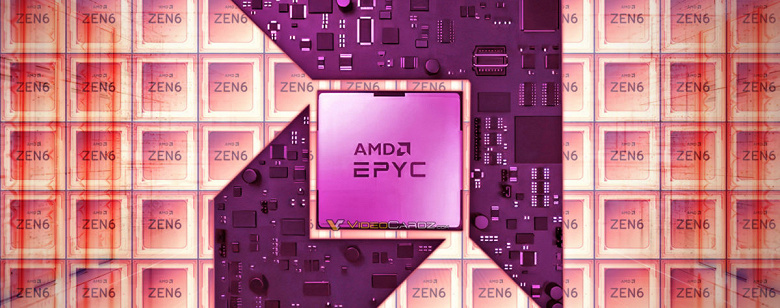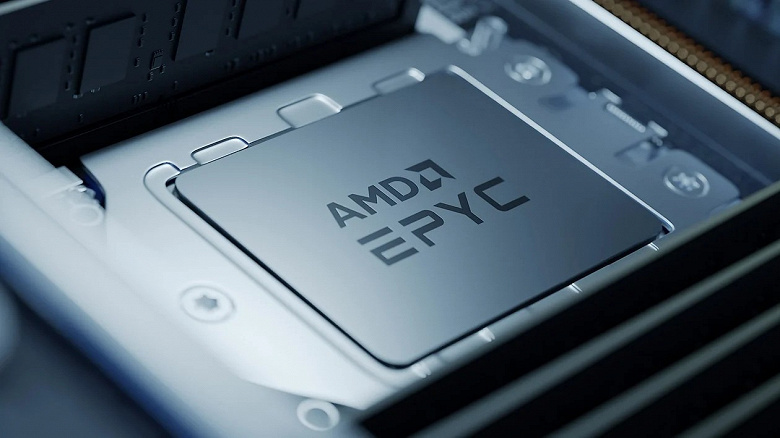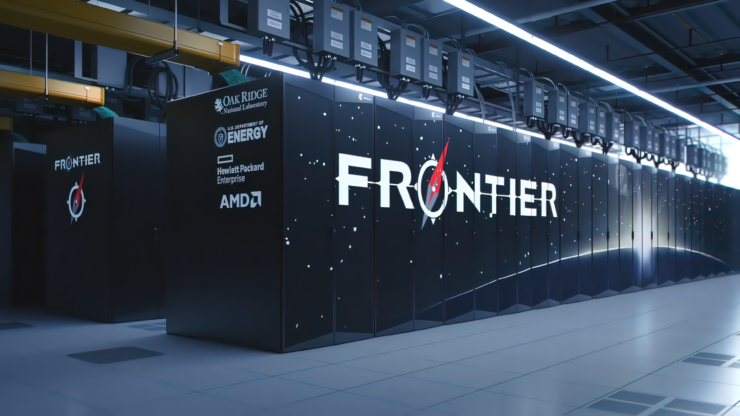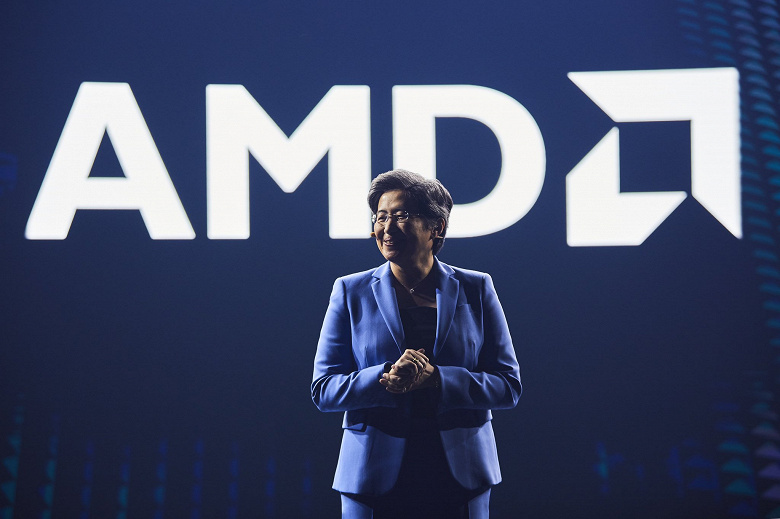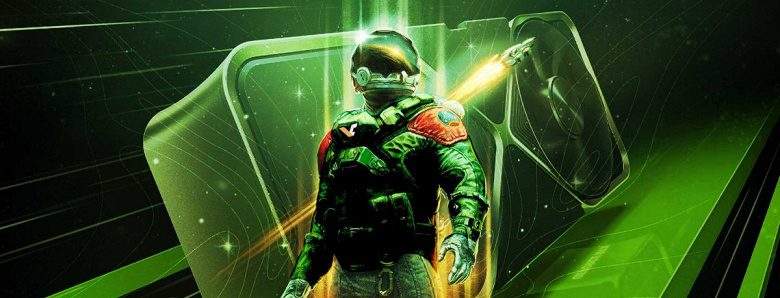Radeon RX 6800 XT and 6800 to the test: AMD’s first video cards dedicated to gaming in 4K and with support for ray tracing aim to challenge Nvidia’s GeForce RTX 3000, in particular the RTX 3080 and the RTX 3070. Strong of the renowned process 7 nanometer production and the collaboration of the Ryzen CPU team, will the new GPUs be able to put pressure on Nvidia? Let’s find out!

A new era is opening up for AMD, that of ray tracing. Radeon RX 6800 XT and Radeon RX 6800 are the first video cards from the company to support the new technology that aims to reproduce the lighting sources within a scene in a more realistic way: this means better reflections, shadows, and more. . Video games are not fully rendered using ray tracing, in fact, we talk about hybrid rendering because the new technique is added to the traditional rasterization.

This is due to the fact that rendering a fully ray-traced scene would be an excessively heavy task for current GPUs and therefore a “middle ground” is needed. This does not mean that the current ray tracing is easy to calculate, indeed, and in fact, similar to what Nvidia did with the GeForce RTX 2000 and 3000 GPUs, AMD has also equipped the RDNA 2 architecture at the base of the new video cards of specialized units called Ray Accelerator. Each RDNA 2 Compute Unit (CU) offers a RA (Ray Accelerator).

The new video cards Radeon RX 6800 XT and Radeon RX 6800 are the first proposals from AMD that aim to guarantee, in most cases, good gaming performance in 4K and maximum details and are candidates as opponents of the GeForce RTX 3080 and RTX 2080 Ti / RTX 3070 from Nvidia. Before seeing if AMD has succeeded in its intent, let’s talk about the characteristics of RDNA 2 and the GPU behind these cards, the now mythological ” Big Navi “.
RDNA 2 architecture, high frequencies and low consumption
After introducing the RDNA architecture with the Navi 5000 series GPUs, AMD has worked hard to fine-tune RDNA 2, a radical step up from previous generation offerings. Just over a year after the arrival of the Radeon RX 5700 XT and 5700 cards on the market, the US company has worked with some clear goals in mind: double the performance compared to the RX 5700 XT, improve by at least 50% performance per watt compared to RDNA with the same production process and support at the highest level DirectX 12 Ultimate, that is, guaranteeing full support for ray tracing, Variable Rate Shading and much more.

The Navi GPU at the base of these two video cards that we are about to analyze has an area of 519.8 square millimeters and integrates 26.8 billion transistors. Inside we find 128 MB of Infinity Cache, 16 PCIe 4.0 lanes, and multimedia capabilities in step with the times: we are talking about 8K support at 120 Hz, the ability to decode AV1 content, and much more for the management of modern content.

According to AMD, the results are even higher than intended, with a 54% performance-per-watt improvement over first-generation RDNA GPUs. A step forward that can be unpacked into three sections, with the first part headed by the team that designed the Zen architecture and subsequent versions in the field of microprocessors. The graphics division of AMD has knocked on the door of those who design Ryzen CPUs to learn some “secrets” on how to make architecture more efficient, increasing the frequencies without necessarily making the consumption jump too high.

This exchange of ideas has led the RDNA 2 architecture to guarantee an increase in frequencies of up to 30% compared to RDNA, without prejudice to the same consumption per CU of the previous project. Seen from the “other side”, there is talk of an improvement in consumption of up to 50% for each CU at the same operating frequency.
Participating in this series of advances is

a long series of changes, from the cache hierarchy that now features a 4MB four-way L2 cache linked to 128MB of Infinity Cache, to a redesign of the same Compute Unit to be able not only to operate at a higher frequency with lower consumption but also to make room for the Ray Accelerators to manage all the calculations involved in ray tracing.
Infinity Cache, the experience of Ryzen CPUs applied to GPUs
Infinity Cache is perhaps the biggest novelty of the RDNA 2 architecture, and it closely resembles the large L3 cache of the latest Ryzen and EPYC CPUs – we can see it as a cache layer that alters the way data is delivered to the GPUs. This sort of global cache allows fast access to data and acts as a bandwidth amplifier, ensuring high bandwidth and great energy efficiency. It is an important piece that has allowed AMD to increase clock rates as well.

According to what the company explained, we have 16 64-bit channels up to 1.94 GHz which provide up to 3 times the peak bandwidth of a traditional GDDR6 memory on a 256-bit bus; Infinity Cache communicates with Compute Units via the second-generation Infinity Fabric, AMD’s high-speed interconnect.
When designing RDNA 2, AMD ran into a problem: How do you double the number of CU units and frequencies by 30% without running out of bandwidth? This is where the Zen team came to the aid of the graphics. Traditionally, caches within GPUs focus on supporting high bandwidth demand from computing units, but capacities are small, in the order of 4-5 MB. Increasing the size of this cache gives a clear advantage, but how do you do it without taking up too much chip space?

AMD’s EPYC CPUs have high-density optimized caches, a whopping four times the L2 cache density of first-generation RDNA GPUs. And because server bandwidth requirements mirror those of an LLC in a GPU, AMD decided to implement a similar solution in RDNA 2, calling it Infinity Cache.
The final result is that AMD has been able to implement a 256-bit memory bus towards VRAM (a good 16 GB), as it guarantees a bandwidth up to 3.25 times higher than that of a pure 256-bit bus and, when power consumption is taken into account, resulting in 2.4 times better bandwidth per watt than a standard 256-bit bus. During the announcement of the new GPUs, AMD declared a 2.17-fold increase in the bandwidth guaranteed by a 384-bit bus despite the only 256-bit link bus, with an even lower power consumption of 90%.
Infinity Cache, which can therefore be seen as a “bandwidth amplifier”, allows for lower memory access latency and is also useful in ray tracing performance of ray intersection calculations. Another point on which the Ryzen team has lent a hand is the increase in frequencies without excessively impacting consumption, and since the GPUs operate easily above 2 GHz, the goal has certainly been hit.
Ray Accelerator, the answer to RT cores
In addition to the traditional computing units that we have come to know over the years, within the new Compute Units of RDNA 2 we find the Ray Accelerator (RA), units dedicated to accelerating ray tracing. Ray tracing, as we have seen since its introduction two years ago with Nvidia’s GeForce RTX 2000 GPUs, is a heavy operation to manage, as a lot of calculations are required to plot the intersections of the rays in order to achieve realistic reproduction of the rays. effects within a very complex geometric scene.

Each Ray Accelerator – one per Compute Unit – is able to calculate up to 4 intersections of rays per box (to learn more, read our article dedicated to ray tracing ) or an intersection between ray / triangle for each clock cycle. The task of the RAs is to efficiently compute the intersection of the rays with the scene geometry as represented in a Bounding Volume Hierarchy (BVH), sort them, and report the information to the shaders for further computation or complete the shading.
Super Resolution, the answer to DLSS is in development
Nvidia has implemented ray tracing in its GPUs accompanying it with a technology called Deep Learning Super Sampling, DLSS for short , an aid for calculating the scene in order to guarantee high image quality and high performance.

The role of DLSS is to replace anti-aliasing techniques such as TAA to ensure images with better clarity and definition , while ensuring superior performance (more details on DLSS 2.0 here
). The DLSS takes advantage of dedicated units called Tensor core, which we do not find in AMD’s GPUs. At the moment AMD doesn’t have a technology similar to DLSS or anything like that, but the company has made it known that it is working on Super Resolution , a solution in the orbit of FidelityFX technologies and which should be based on Microsoft’s DirectML API.
Smart Access Memory
Presenting the new video cards, AMD talked about a feature called Smart Access Memory (SAM) which requires Ryzen 5000 processors, a 500 series platform with firmware updated to AGESA 1.1.0.0 and of course a new video card (6800, 6800 XT or 6900 XT at the moment). Smart Access Memory gives the CPU access to the entire VRAM memory of the video card (in this case 16 GB), whereas previously access was limited to 256 MB.
This solution derives from the Base Address Register (BAR) functionality at the heart of PCI Express technology , which allows you to define how much GPU memory space is mappable. By mapping the entire memory, a limit (and therefore an inefficiency) is removed, unlocking further performance . This is due to the fact that by mapping only 256MB, games have to make continuous “back and forth” trips between the CPU and RAM in case the data exceeds that size, thus creating a so-called bottleneck .
The performance increase linked to the activation of Smart Access Memory, as declared by AMD, reaches up to 11%, with an average improvement of 5-6% with different titles. We will do some testing, but be aware that Nvidia is also working on a similar solution for RTX 3000 video cards and it will be activated on both Intel and AMD platforms.
Radeon RX 6800 XT and 6800 close up views
The Radeon RX 6000 range comes in three models, but today AMD presented only two solutions, the Radeon RX 6800 XT and the Radeon RX 6800. The Radeon RX 6900 XT will arrive on December 8th. So let’s focus on the proposals covered by this review.

The Radeon RX 6800 XT is based on a GPU with 72 active Compute Units, for a total of 4608 stream processors capable of operating at frequencies of 2015 MHz (Game Clock) / 2250 MHz (Boost Clock). As mentioned, each Compute Unit has a Ray Accelerator, and therefore there are 72 active in this GPU. 288 texture units and 128 ROPs complete the picture. The card features 128 MB of Infinity Cache and 16 GB of GDDR6 memory at 16 Gbps on a 256-bit bus, for a bandwidth of 512 GB / s. The TDP of this solution is 300W.
The younger sister Radeon RX 6800 has 60 active Compute Units , for a total of 3840 stream processors. The graphics chip also has 240 texture units and 96 ROPs. The GPU operates at 1815 MHz (Game Clock) and 2105 MHz (Boost Clock), and otherwise has the same characteristics as its big sister, except for the 250W TDP.
From the point of view of the cooling system and the PCB, AMD has had to completely revise the project with respect to the Radeon RX 5000 proposals, and for this reason it offers cards equipped with three fans – like the Radeon VII, but we tell you immediately, with a definitely much lower noise. We start from the outside and then “dig” inside.
The three axial fans inject fresh air into the card, without producing a lot of noise. They also feature a 0dB mode, which means they don’t spin at low graphics loads. The fans are surrounded by an aluminum frame, open only on the sides of the card, from which heat escapes. This heat, according to AMD, is then captured by the rear fan in the case and expelled.
| Radeon RX 6800 XT | Radeon RX 6800 | Radeon RX 5700 XT | Radeon RX 5700 | |
| Architecture | RDNA 2 | RDNA 2 | RDNA | RDNA |
| Productive process | 7 nanometers | 7 nanometers | 7 nanometers | 7 nanometers |
| Number of transistors | 26.8 billion | 26.8 billion | 10.3 billion | 10.3 billion |
| Die size | 519 mm2 | 519 mm2 | 251 mm2 | 251 mm2 |
| Compute Unit | 72 | 60 | 40 | 36 |
| Stream processor | 4608 | 3840 | 2560 | 2304 |
| Ray Accelerator | 72 | 60 | – | – |
| Texture unit | 288 | 240 | 160 | 144 |
| ROPs | 128 | 96 | 64 | 64 |
| Game Clock | up to 2015 MHz | up to 1815 MHz | up to 1755 MHz | up to 1625 MHz |
| Boost Clock | up to 2250 MHz | up to 2105 MHz | up to 1905 MHz | up to 1725 MHz |
| FP32 computing power | up to 20.74 TFLOPs | up to 16.17 TFLOPs | up to 9.75 TFLOPs | up to 7.95 TFLOPs |
| FP16 computing power | up to 41.47 TFLOPs | up to 32.33 TFLOPs | up to 19.5 TFLOPs | up to 15.9 TFLOPs |
| Fill-rate texture | up to 648 GT / s | up to 505.2 GT / s | up to 304.8 GT / s | up to 248.4 GT / s |
| Pixel fill-rate | up to 288 GP / s | up to 202.1 GP / s | up to 121.9 GP / s | up to 110.4 GP / s |
| AMD Infinity Cache | 128 MB | 128 MB | – | – |
| GDDR6 memory | 16GB at 16Gbps | 16GB at 16Gbps | 8 GB at 14 Gbps | 8 GB at 14 Gbps |
| Memory bus | 256 bit | 256 bit | 256 bit | 256 bit |
| Memory bandwidth | up to 512 GB / s | up to 512 GB / s | up to 448 GB / s | up to 448 GB / s |
| TBP | 300W | 250W | 225W | 180W |
It is precisely by looking from the side that you can see the heart of the cooling system, a voluminous radiator with a vapor chamber under which there is a graphite thermal interface on the GPU and an aluminum structure that gives structural rigidity . On MOSFETs and GDDR6, AMD’s engineers have placed thermal pads to promote heat exchange.
The 14-layer PCB (four with 2 ounces of copper for better conductivity) features 15 power phases and features two classic 8-pin PCIe power connectors on both boards . Two phases are dedicated to GDDR6 memories (8 chips of 16 Gbit), and AMD points out that this clear difference in efficiency compared to Nvidia, which on the RTX 3080 dedicates 3 phases to 10 memory chips and on the 3090 four for 24 chips, is linked to Infinity Cache.
As for overall dimensions, both cards are 26.7cm long and 12cm deep, while the RX 6800 occupies 2.5 slots unlike the 2 slots of the “smooth” 6800 . AMD recommends a 750W power supply for 6800 XT systems and a 650W power supply for 6800 systems.
On the back of the cards we have two DisplayPort 1.4 connectors and one HDMI 2.1, along with a USB C port that can be used for power or to manage displays equipped with this port, or virtual reality viewers.
Consumption, temperatures, noise and thermal analysis
With the Radeon RX 6800XT and Radeon RX 6800 cards, AMD has introduced a new reference design based on a triple fan heatsink , departing from what was developed for previous generations of video cards. The result is decidedly brilliant , with a thermal and acoustic profile that can finally be considered in line with what Nvidia achieved with its GeForce RTX 3000 family cards.
The GPU temperature of the two cards, measured while running the Hitman 2 benchmark in loop for 30 minutes, remains stable at just above 70 ° . The data of the Radeon RX 6800 XT is slightly higher due to the higher clock frequency and the greater number of active stream processors but always within a threshold of absolute tranquility.
The clock frequency of the two GPUs always remains very high, stably positioning itself well beyond the 2 GHz threshold and remaining so even during the long stress test. Thanks to the 7-nanometer production technology used for the production of these GPUs, AMD has managed to maintain complexity in the architecture and high clock frequencies, a combination that has made it possible to offer a level of performance never before achieved by the company. American.
The clock frequency of the two GPUs always remains very high, stably positioning itself well beyond the 2 GHz threshold and remaining so even during the long stress test. Thanks to the 7-nanometer production technology used for the production of these GPUs, AMD has managed to maintain complexity in the architecture and high clock frequencies, a combination that has made it possible to offer a level of performance never before achieved by the company. American.
To close, the card consumption level: we note how for the Radeon RX 6800 XT card the consumption value tends to remain almost linear, with marginal fluctuations during the execution of the 3D application. The behavior of the Radeon RX 6800 is different, for which the maximum value is lower than that of its older sister with a much more pronounced instantaneous variability in consumption.
Both cards are very quiet in operation, with fans remaining completely idle when the workload isn’t high enough to put stress on the GPU . While running a game the fans rotate more for the Radeon RX 6800 card, as the heatsink is smaller in terms of thickness than that of the Radeon RX 6800XT and therefore the dissipating surface is smaller. The noise levels when running a 3D application are overall much lower than what AMD has accustomed us to in the past with its own reference designs, settling the bill with Nvidia’s proposals.
The thermal images of the two Radeon cards allow you to clearly highlight how the heat is dissipated. Fresh air is sucked in by the three fans and conveyed by them to the radiator, which develops along the entire length of the board. The hot air only comes out of the opening at the top of the card, moving naturally towards the top of the case from which it will be expelled by the fan installed in the chassis.
At the end of the 3D load, the profile chosen by AMD blocks the fans at about 53 ° C, after which the heat “stagnates” on the radiator and the GPU continues to maintain a high temperature for a longer period than what is seen with the Nvidia proposals or third parties. We saw this behavior on our test bench, and it is not a problem as the GPU and memory drop to a frequency practically close to 0 MHz at idle – plus the GPU has much higher temperature thresholds. Inside a case, the recirculation of air should speed up the drop in temperature, albeit with increasingly longer times than what is seen with other video cards.
Test setup
The tests were conducted at video resolutions of 1920×1080 pixels, 2560×1440 pixels and 3840×2160 pixels, always trying to use very high quality settings to shift the load as much as possible on the GPU. Below are the video cards included in this comparison:
- AMD Radeon RX 6800 XT (reference)
- AMD Radeon RX 6800 (reference)
- Nvidia GeForce RTX 3090 (Founders Edition)
- Nvidia GeForce RTX 3080 (Founders Edition)
- Nvidia GeForce RTX 3070 (Founders Edition)
- Nvidia GeForce RTX 2080 Ti (Founders Edition)
- Nvidia GeForce RTX 2080 (Founders Edition)
- Nvidia GeForce RTX 2070 Super (Founders Edition)
- Nvidia GeForce RTX 2060 Super (Founders Edition)
- Nvidia GeForce RTX 2060 (Founders Edition)
- AMD Radeon VII (reference board)
- AMD Radeon RX 5700XT (reference board)
- AMD Radeon RX 5700 (reference board)
- AMD Radeon RX 5600XT (Sapphire Pulse)
Below is the configuration of the system used for the tests:
- Operating system: Windows 10 Pro Italian
- Processor: Intel Core i9-10900K
- Power supply: CoolerMaster Silent Pro Gold 1200 Watt
- Motherboard: ASUS ROG Maximus XII Hero WiFi
- Memory: G.Skill Trident Z 2x8GB DDR4-4000 (17-17-17-37)
- SSD: Crucial P1 M.2 2280 1TB
- NVIDIA video driver: GeForce 457.30
- AMD video drivers: Drivers for printing compatible with the new Radeons
Performance without ray tracing
Compared to the classic suite, we have included a few more titles to appreciate the performance of the new video cards from AMD and Nvidia even with newly released games. In this part of the article we focus on game performance without ray tracing, so the classic rasterization that still is the most popular. The cards in the charts are positioned according to the result in 4K, the resolution that AMD aims at with the new Radeon RX of the 6800 series.
Assassin’s Creed Odyssey shows us how the 16 GB of memory and the new RDNA 2 architecture help the new Radeon RX 6800 XT and 6800 to reach the fateful 60 fps in 4K, with the 6800 XT in front of everyone, albeit slightly. At lower resolutions, however, Nvidia’s proposals prevail, even significantly in Full HD.
Borderlands 3 again rewards the Radeon RX 6800 XT over Nvidia’s RTX 3080, and the RTX 3070 is also largely detached from the RX 6800. The title seems to like AMD’s new RDNA 2 architecture and ample amount of VRAM.
DiRT 5 is one of those “special” cases that occasionally occur, and which is difficult to explain. Traditionally the Codemasters game series loves AMD GPUs and the new Radeons are no exception with a clear-cut win at all resolutions. The RX 6800 XT even outshines the RTX 3090 in 4K and the gap to other resolutions is even more pronounced. Nvidia absolutely needs to contact Codemasters to understand the origin of this gap and fix it, it is frankly too high.
Doom Eternal rewards the RTX 3080 over the RX 6800 XT, but frankly the frame rate is so high with any card that it can hardly be called an issue. The RTX 3070 and the RX 6800 are almost paired in Full HD and WQHD, while in 4K the card of AMD the check of about ten frames per second.
F1 2020 particularly loves the new architectures of Nvidia and AMD, and in particular seems to prefer RDNA 2. Both new proposals reach very high numbers, with the RX 6800 XT able to beat even the RTX 3090 and the RX 6800 stably ahead of the RTX 3070 (it is also faster than the 3080, except in 4K for a few fps).
Far Cry 5 is another game where 16GB seems to help especially in 4K, where the RX 6800 XT outperforms the RTX 3080 by 5fps, ahead of lower resolutions. The Radeon RX 6800 ranks ahead of the RTX 3070 in all scenarios except Full HD.
Even in Ghost Recon Wildlands the newcomers from AMD perform very well in 4K at Ultra details, while the proposals RTX 3090 and 3080 stand out widely in Full HD. The RTX 3070 is behind the RX 6800 again, except in Full HD where it is slightly faster.
Godfall is a new temporary exclusive PS5 game, also available on PC via the Epic Games Store. This time the RTX 3080 beats the RX 6800 XT at all resolutions and the RX 6800 is only slightly ahead of the RTX 3070.
Hitman 2 seems to particularly love the 4K Ampere architecture, with the RTX 3080 definitely ahead of AMD’s RX 6800 XT. The RX 6800 is instead ahead of the RTX 3070 at the same resolution, but behind the RTX 2080 Ti which claims its 11 GB of memory compared to the 8 GB of the 3070. Note the exploit of the RTX 2080 Super.
Undoubtedly, except for one title, DLSS makes the difference between non-playability and playability with ray tracing at maximum in 4K. The performance boost is sometimes quite sensitive, others less, but in general it allows Nvidia cards to be preferred right now if your aim is to play games with ray tracing support right away.
Performance with Smart Access Memory
To test the performance of the Radeon RX 6800 XT and Radeon RX 6800 cards with Smart Access Memory (SAM) we necessarily had to switch platforms, switching to a system with a Ryzen 5000 processor and updated BIOS. Below are the specifications of the computer on which we carried out the tests.
- Operating system: Windows 10 Pro Italian
- Processor: AMD Ryzen 9 5900X
- Power supply: CoolerMaster Silent Pro Gold 1200 Watt
- Motherboard: ASUS ROG Crosshair VIII Hero Wi-Fi
- Memory: G.Skill Trident Z 2x8GB DDR4-4000 (17-17-17-37)
- SSD: Samsung 960 EVO 1TB
- NVIDIA video driver: GeForce 457.30
- AMD video drivers: Drivers for printing compatible with the new Radeons
Borderlands 3 shows us how Smart Access Memory technology is of particular help at low resolutions, with a nice performance boost for both the RX 6800 XT and 6800. A few more fps in 4K, which is certainly not a bad thing. which is the most demanding scenario regarding the video card.
Smart Access Memory proves to be an interesting feature that can further increase the performance of Radeon RX 6800 video cards . It should be a little experimented game by game and based on resolution, but it is something more to be taken into account in certain situations and to be experimented. Nvidia is also working on a similar solution for RTX 3000 GPUs, and we know it will work on both AMD and Intel platforms. At the moment, however, there are no further details.
Automatic overclock with Rage Mode
Within the driver control panel, AMD implemented what it called ” Rage Mode “. Rage is a tribute to the first 3D accelerator developed by ATi Technologies, the Canadian company acquired by AMD in 2006 and from which AMD-branded GPUs were born.
Rage Mode, more precisely, is one of three profiles that allow you to change the performance profile of the GPU with a click, alongside Quiet and Balanced. This mode – available only for the RX 6800 XT – increases the power limit and fan speed so that the GPU can produce more performance. The margin obviously changes from one chip to another and according to the cooling system. This mode, AMD assured us, has no repercussions in terms of warranty.
Also in the driver panel there is also the possibility to automatically overclock both the GPU and the VRAM with a click. For example, on our RX 6800 XT the GPU boost clock was pushed to 2509 MHz, while the graphics chip of the RX 6800 was raised to a boost clock of 2344 MHz. In both cases the VRAM was increased from 2000 to 2150 MHz.
Conclusions
AMD pleasantly surprised us . Just over a year after the RX 5700 series devoted to gaming at 1440p, the company is finally on the market with solutions dedicated to 4K and hits the set goal: the new Radeon RX 6800 XT and 6800 video cards are excellent proposals for gaming at this resolution with maximum details.
Nvidia has DLSS (Deep Learning Super Sampling) on its side , a technology that allows you to maintain high performance especially in the presence of ray tracing: it is an undoubted advantage and we do not know at the moment if and when AMD will be able to fill it. Certainly the DLSS allows you to play in ray tracing and 4K resolution with Nvidia’s top-of-the-range cards, which is not possible at the moment with the AMD proposals but we are waiting for the debut of the Super Resolution feature.
As for prices , AMD has communicated the following official price lists: the Radeon RX 6800 XT is on the market at € 669.99, while the Radeon RX 6800 at € 599.99 . Notwithstanding that the list prices could be totally upset for weeks due to an availability that we do not expect high, it is interesting to remember how these reference cards will not be marketed only by AMD, but also by partners, and therefore retail prices should be more adherent to the official lists than those of Nvidia.
The latter has set the price of the Founders Edition at € 719 for the RTX 3080 and € 519 in the case of the RTX 3070, but these cards are practically unavailable and the custom proposals of the partners have starting lists respectively closer to € 800 and 600 € at the moment.
The situation is therefore far from being crystallized and we will certainly need to talk about it again in the future. But one thing is certain: AMD, as already done in the CPU sector, has officially launched the gauntlet to those who have dictated the law in recent years in the high end of the market.




















